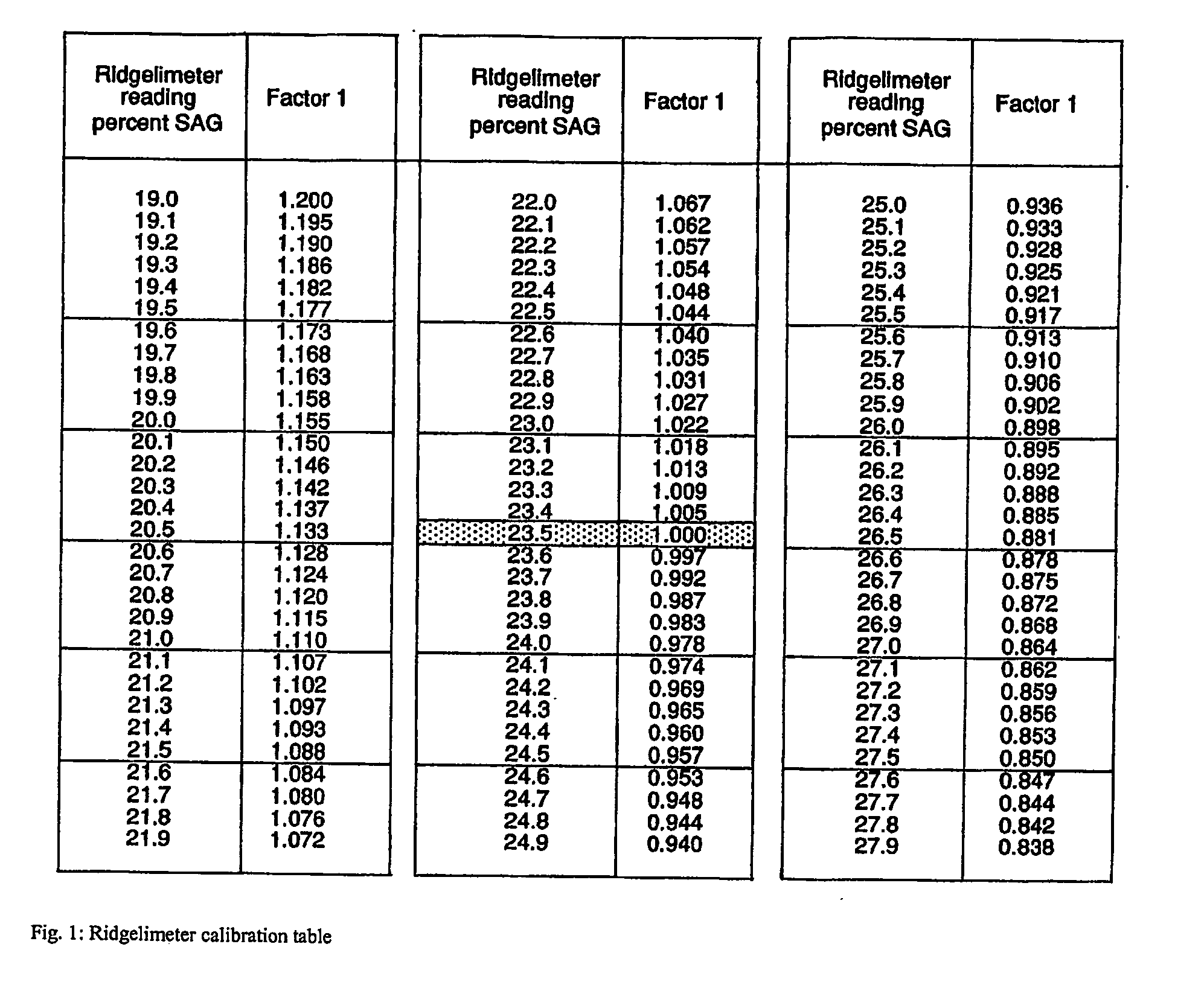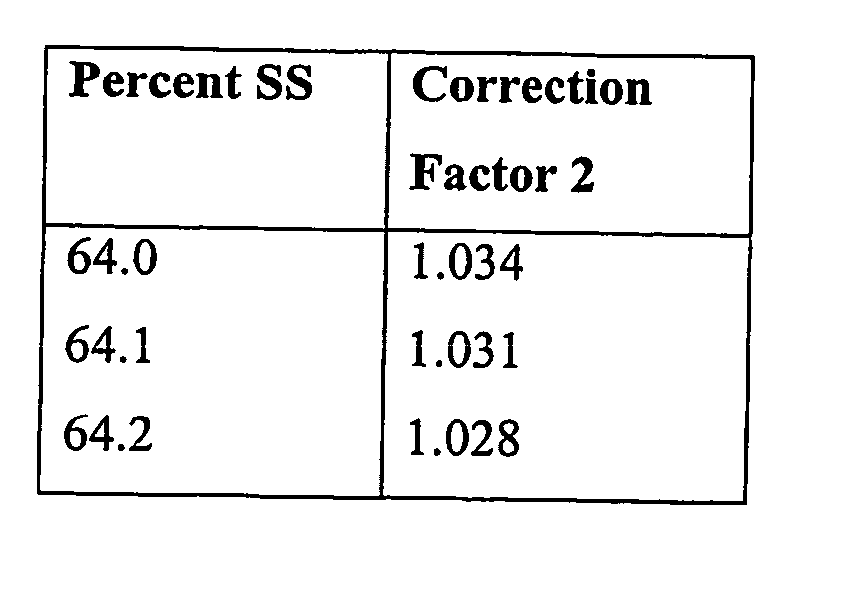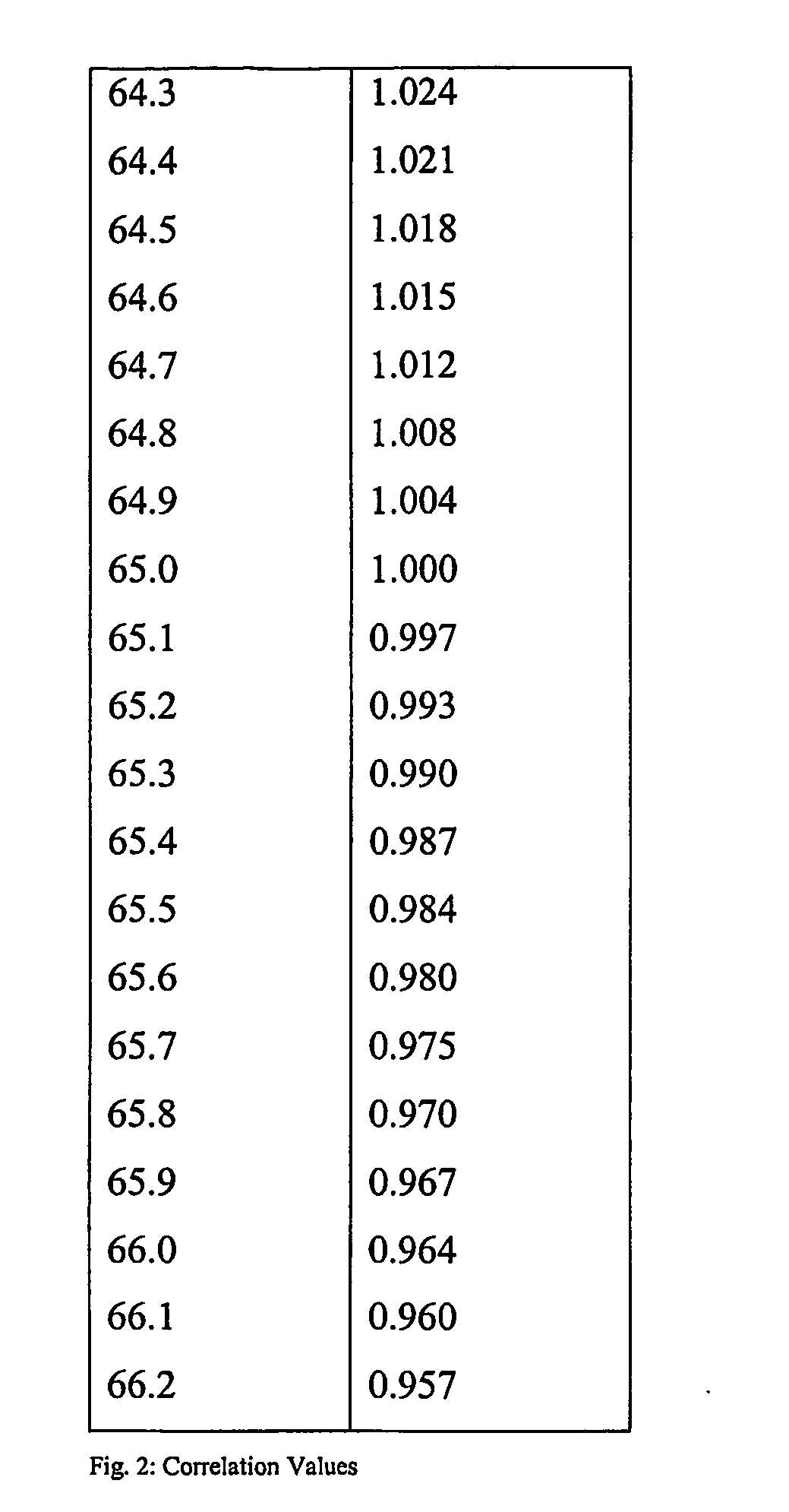Process for treating pectin containing plant material
a pectin and plant material technology, applied in the field of improving the method of treating the starting material of the pectin, can solve the problems of reducing the gel power of the resulting deesterified pectin, affecting the gelling capacity, and affecting the gelling
- Summary
- Abstract
- Description
- Claims
- Application Information
AI Technical Summary
Benefits of technology
Problems solved by technology
Method used
Image
Examples
examples
[0446] The following examples are offered by way of illustration, not by way of limitation.
example 1
[0453] In this example, the treatment with acid is performed at room temperature and with a higher amount of water.
[0454] 8 liters of shredded orange peel (measured by replacement) were added to 24 liters of water, to which had previously been added an amount of acid to reach a pH in the peel / water mix in the range 2.8-3.6. It turned out, that an amount of 20 ml of 62% nitric acid resulted in a pH of 3.2 of the peel / water mix. The peel / water mix was stirred at room temperature for 15 minutes. After this period, the peel was separated from the liquid, and the recovered peel was pressed under slight pressure on a hydraulic press to remove excess water without crushing the peel. The pressed peel was then added to 24 liters of fresh water to which was previously added an amount of acid to reach a pH in the peel / water mix in the range 2.8-3.6. It turned out, that an amount of 15 ml 62% nitric acid resulted in a pH of 3.2 of the peel / water mix. The lower amount of acid necessary in this ...
example 2
[0459] In this example, the comparative example was repeated with fresh oranges directly picked from an orange tree. However, this example used steam instead of boiling water. The procedure was the same as in example 1. However, after thrice washing with acidified water, the lightly pressed peel residue was placed on a Bücher funnel. To the outlet of the Bücher funnel a tube was fitted, and steam was then injected into the peel through the tube. The steaming continued for 3 minutes. With a thermo couple, the temperature inside the peel was measured, and it turned out, that a temperature of 90° C. was achieved after 2 minutes of steaming. After steaming, the peel was further processed as in example 1. The resulting pectin was labeled “D”.
[0460] Results:
Break strengthBreakBreakSampleMwSAGDE %−Ca+Ca+Ca / −Ca“D”93800205°661952011.03
[0461] With completely fresh orange peel, the USA SAG was about 16% higher than in the comparative example. Similarly, the molecular weight was about 14% hi...
PUM
| Property | Measurement | Unit |
|---|---|---|
| Temperature | aaaaa | aaaaa |
| Temperature | aaaaa | aaaaa |
| Temperature | aaaaa | aaaaa |
Abstract
Description
Claims
Application Information
 Login to View More
Login to View More - R&D
- Intellectual Property
- Life Sciences
- Materials
- Tech Scout
- Unparalleled Data Quality
- Higher Quality Content
- 60% Fewer Hallucinations
Browse by: Latest US Patents, China's latest patents, Technical Efficacy Thesaurus, Application Domain, Technology Topic, Popular Technical Reports.
© 2025 PatSnap. All rights reserved.Legal|Privacy policy|Modern Slavery Act Transparency Statement|Sitemap|About US| Contact US: help@patsnap.com



